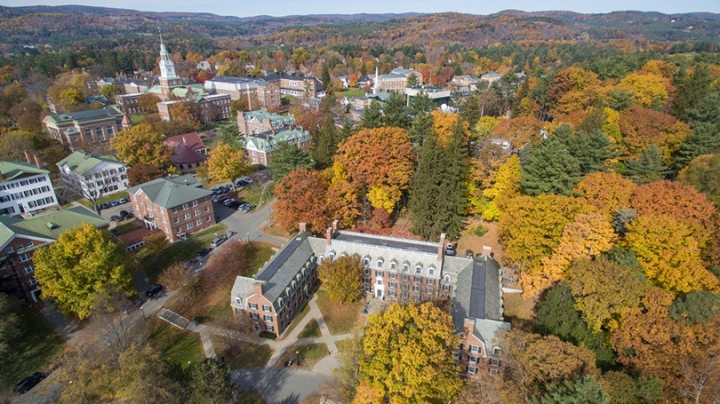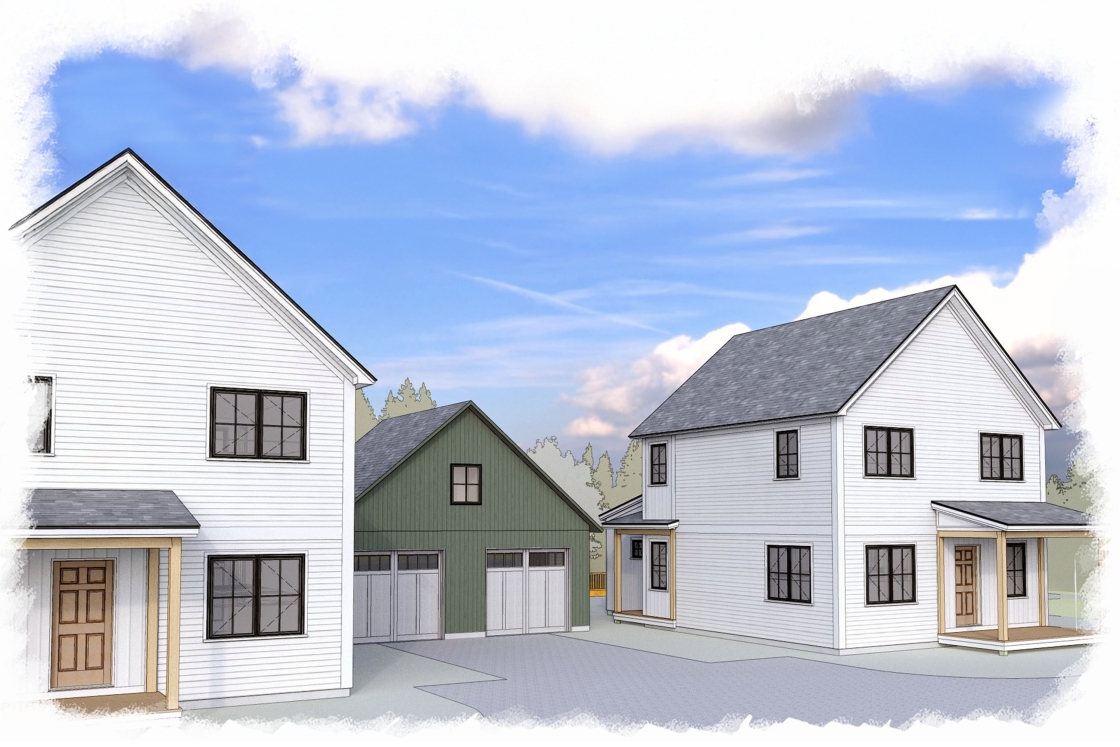Dartmouth will explore a conceptual design to investigate the feasibility of building undergraduate residence halls in a portion of College Park, a 35-acre green space in the middle of campus.
Land surveying and site analysis of the west end of the park will be done over the next six weeks by Sasaki Architects of Watertown, Mass. A report on the viability of adding 750 undergraduate beds on the site will be reviewed by College trustees to inform a decision at their November meeting.
“We have been at capacity for several years and have maintained long waiting lists for housing each summer, as our existing residence halls do not have enough beds to meet the demand for fall term housing,” says Executive Vice President Rick Mills.
In addition to deferred maintenance in many of the College’s older residential facilities, administrators would like to equalize the quality of undergraduate residence halls, says Mills. The College Park property is under consideration because it is in the interior part of campus, immediately adjacent to other residence halls—Ripley Woodward Smith, the Fayerweathers, Richardson, and Wheeler—and it is the only available site with the necessary capacity.
The housing shortage has not permitted the College to address deferred maintenance of existing residence halls, as such work requires closing a hall for at least a year and there is no “swing space” to house students while such work is being done. The Morton Hall fire last October underscored the space shortage, as Morton residents who suddenly needed housing had to be put up for the remainder of the term in College rental properties.
“We faced the same challenge this fall, housing an incoming first-year class that is larger than in recent years,” says Mills. “It’s clear that we need more bed space.”
If the College decides to move forward with the College Park site, which would require a series of institutional and town approvals over the next two years, the earliest possible start of construction would be in mid-2019, for completion in the summer of 2021.
Conceptual design and cost estimates of building new residential space will inform the College’s decision on whether to proceed with the building project, says Mills.
The conceptual design process defines the scope, scale, impact, and preliminary costs for such a project. The College’s Planning, Design and Construction team is working on the study with the Dean of the College and Residential Life offices. In addition to land surveying at College Park, the process includes geotechnical studies and utility assessments, including energy efficiency and sustainability goals at the LEED Platinum or Gold certification levels. Work with focus groups will also be part of the project investigation. The College is considering use of a quarter to one-third of the land in College Park.
Neighbors living close to the area will be invited to an informational session hosted by the College in mid-October to provide an update on the work and respond to questions. Feedback can also be emailed to College.Park.Conceptual.Design@dartmouth.edu.
If a decision is made to build in College Park, every effort will be made to preserve the special character of the park, says Mills.
“We understand the importance of the park to the Dartmouth community and to our Hanover neighbors, and if we decide to build there, we will do everything possible to maintain the beauty of the natural spaces,” he says.
The park, which is bounded by College Street, North Park Street, Ivy Lane, and Observatory Road, has been part of Dartmouth since the College’s founding and is the site of formal and informal gatherings each year. First-year students walk together to the park in a candlelit twilight ceremony at the end of orientation, and graduating seniors gather at the park’s Bema—an outdoor amphitheater—for class day every spring. Also in the park is Bartlett Tower, a slim, 71-foot stone structure built over a decade in the late 1880s by students working with a stonemason. A bronze statue of Robert Frost is located near the tower.
Additional beds are needed to allow for renovation and renewal, regardless of possible growth in enrollment. On Aug. 2, President Phil Hanlon ’77 charged a Task Force on Undergraduate Enrollment Scale, co‐chaired by Dean of the College Rebecca Biron and Dean of the Faculty of Arts and Sciences Elizabeth Smith, to study the pros and cons of enrollment growth and consider the potential effects. The task force will report its findings to the president in March 2018.


